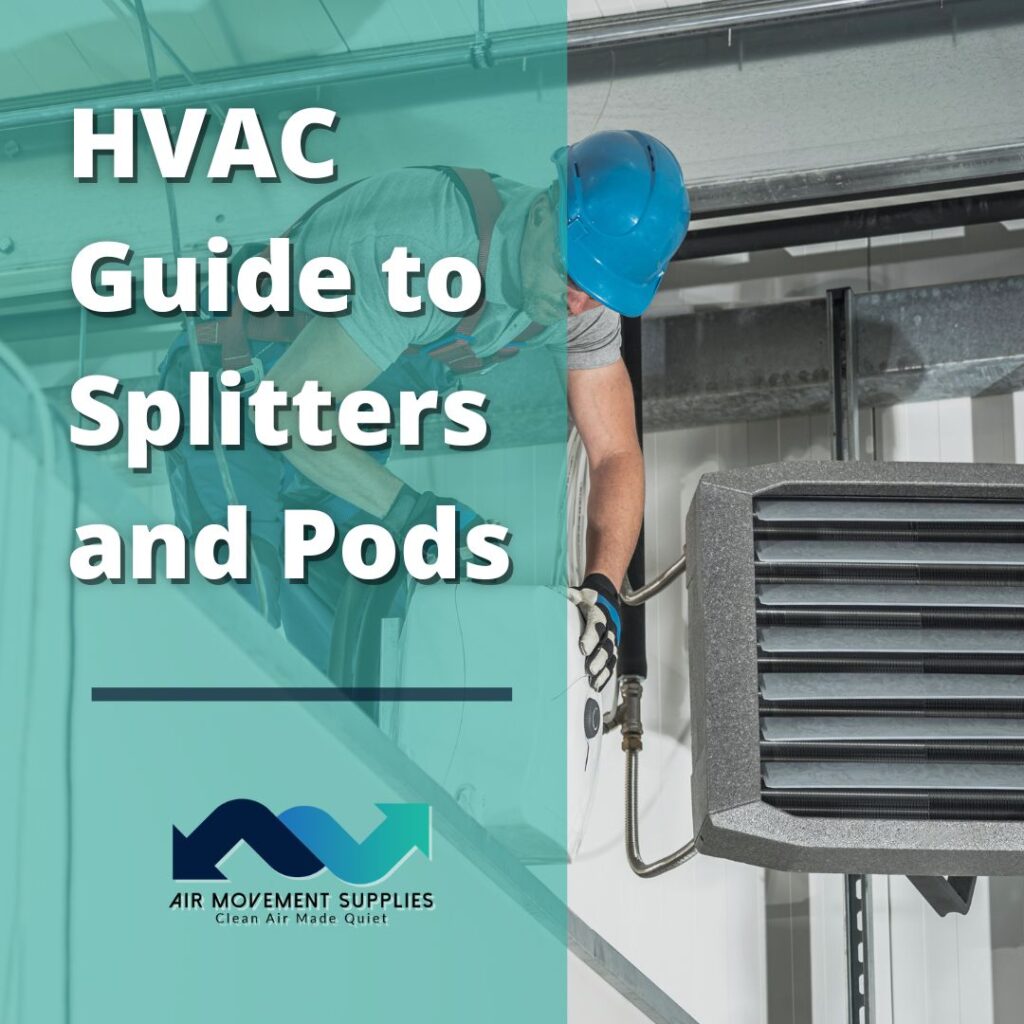HVAC Guide to Splitters and Pods
- Max Underhay
- October 20, 2022
Share this article:

If you’re in the market for a new HVAC system, you may have come across the terms “pods” and “splitters”. But what are they exactly? How do they work? What is their purpose? And which one should you go with? Let us help clear some things up!
What is a “pod” and “splitter”?
Pods and splitters can also be known as duct silencers or mufflers. They are used in passive attenuators for a wide range of applications, although typically used for noise reduction they can be used for airflow control as well. They may provide the extra assistance an attenuator needs to operate to the best of its ability. A splitter will direct air flow in a single direction, while a pod does not have any directional capability. Pods can also be set up for manual or automatic operation, whereas splitters do not offer this option.
Each of our attenuators includes a centre or two side splitters. These will be passed by the air, which will then be directed toward the attenuating insulation. The centre splitter may produce extra noise if the airflow to your attenuator is flowing at a very high pressure. In this situation, removing the centre splitter will create a larger airway for the airflow to travel through.
The similarities and differences
Splitters are used to control sound more than air flow; they’re designed specifically for large spaces like auditoriums, arenas, and gymnasiums where there may be multiple loudspeakers playing simultaneously. Splitters are made of solid and perforated metal and are placed inside the silencer, which projects into the airstream and houses the acoustic media.

Circular attenuators can be equipped with pods; however, this may be an optional extra. The air is distributed around the pod and more specifically toward the insulation, similar to the splitters seen in rectangular attenuators.
As the airflow is more directed, these offer a better amount of attenuation, but this can also impede airflow.

For the acoustically absorptive splitters and pods to function, both circular and rectangular attenuators must follow the same basic principles. For better low frequency attenuation, thicker absorptive components (usually 300mm to 600mm) are required. Better high frequency performance is provided by narrower airways, which are typically 50mm to 100mm wide. However, the free area proportion (airway:splitter ratio) and the velocity of air in the attenuator regulate the aerodynamic resistance of an attenuator. This means that a similarly sized attenuator with thick splitters and tiny airways will impose significantly greater airflow resistance than one of the same size with thinner splitters and wider airways, necessitating the use of a much larger attenuator.
What are the reasons behind the ductwork's noise?
Air handling equipment and noise transfer from one room to the next both contribute to the noise in the ducting. However, the air passing through straight ducts and the impact of the air passing through objects like bends, branches, mixing boxes, etc. can also generate noise. It is advised to add duct silencers into the system project in order to reduce ventilation system noise in order to prevent this (attenuators).
Unwanted or unpleasant sound is referred to as “noise.” Background noise is a feature of all structures. Decibels (dB), which are logarithmic units that rise exponentially with rising sound levels, are used to measure it.
Selecting an Attenuator
When it comes to choosing between a pod and a splitter, you’ll want to consider what your own requirements are.
Choosing a model that meets the necessary insertion loss is the first step in choosing an appropriate attenuator arrangement. This will define the attenuator’s length and module width.
Finding the attenuator’s width and height is the next stage. Depending on the application, the height can be chosen.
Third, determine the noise generation and pressure loss. Both equations need the air flow through the attenuator. The width and/or height of the attenuator must be raised if the pressure loss and/or regenerated noise are too high.
Max Underhay
Table of Contents
Related Articles

HVAC vs Air Movement: What Is The Difference?
The HVAC and Air Movement industry is growing and with good reason. The HVAC and Air Movement industry is a multi-billion-dollar business that has seen double-digit growth over the last decade. However, what is the difference between HVAC and Air Movement.

Material Price Increase and Stock Shortage – What to Expect.
With prices continuing to rise and no lack of material shortages, here’s what to expect for the future.

Why Buy British?
Buying British means more than just buying locally, but it is the support of our ever-growing and strengthening British manufacturing community.
